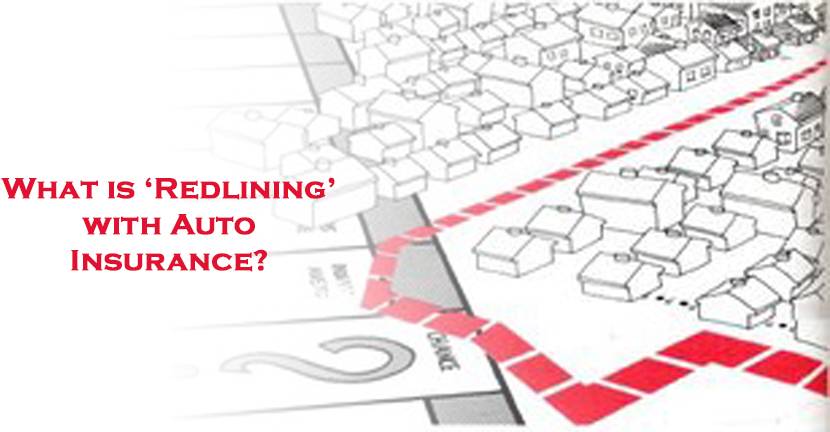What is 'Redlining' with Auto Insurance?

During their research on automobile insurance, people sometimes come across the term redlining. Insurance companies are sometimes accused of doing this, or specific communities might face insurance prices that are higher due to redlining. What is ‘redlining?’ Is redlining something that still happens today? People are not only interested in knowing what the term is, but whether it is legal. This article will give you the information you need to know about car insurance and redlining.
What Is Redlining With Auto Insurance?
It is most common for redlining to be used as a term in Canada and the United States. The term refers to the practice of charging higher prices for insurance to certain neighborhoods or communities. In many cases, this has been done historically within a racial context. Auto insurance companies may be accused of raising prices in areas they select where people have lower incomes. Denying coverage to a person of a certain race, or people of a certain race, can often result in the health insurance company being accused of redlining. There are some companies that have been accused of charging higher rates to people of certain ethnicities.
Where Does The Term ‘Redlining’ Come From?
First coined by a sociologist, John McKnight, in the 1960s, the term redlining has been used in numerous manners. Mr. McKnight noticed that banks would avoid certain neighborhoods in terms of investing. In some cases, certain cities were avoided as well. As an example, banks would avoid investing in predominantly black inner-city communities. Banks would post the cities that they served for their staff members. Some of the areas and ZIP Codes would have red lines drawn around them, though, and agents were prohibited from writing policies to people who lived in those communities. The term redlining came from these red lines.
Some companies would refuse to sell insurance policies in a community that was redlined altogether. Other companies did sell the same insurance policies, but with significantly higher premiums attached. Redlining gained attention across the nation when reporter Bill Dedman published a series of articles. These articles showed that banks would lend money to lower-income white applicants, but not to middle income or upper-income black applicants. He received a Pulitzer Prize for one of his works, which was titled “The Color of Money: Home Mortgage Lending Practices Discriminate Against Blacks.” Not only did his works increase the amount of conversation surrounding redlining, but it also changed how many places looked at lending money out and providing insurance.
Does Redlining Still Occur Today?
Unfortunately, redlining still continues to occur in the United States and Canada. Accusations surrounding redlining occur because of the denial of financial services like insurance and banking. Health insurance companies are sometimes accused of redlining, as well as auto insurance companies. Another term has also come to light is called “reverse redlining.” This happens when specific lenders and companies target communities that are predominantly non-white, while also charging them more for ordinary services.
If one applicant is denied service while another is accepted while being in a similar situation, it could be considered redlining. If a white driver has multiple infractions in their community, and a black driver has the less and more minor infractions and is denied, it is redlining.
Insurance companies say that redlining is no longer something that occurs. Insurance companies are prohibited from considering race or ethnicity when selling insurance policies by law. It is true that companies that use ethnicity or race when pricing car insurance premiums will face lawsuits. Still, insurance companies can use Zip Codes to calculate premiums. Insurance companies can also look at crime rates and accident rates in particular Zip Codes to calculate insurance premiums. When certain communities are 90% African-American or other races, this practice can appear to be based on race. There are some reports that indicate that racially-based redlining still exists, some of which have been published more recently. Some of these have shown that the rates are more high or low than the statistics show they should be.
One way that people can battle against redlining and price differences from one community to the next is to shop around for car insurance policies. If you feel you’re being treated unfairly by a car insurance company, research the company and see if other people feel they are having the same experiences. The companies here are some of the best car insurance companies in the country, so getting free quotes here can be a major help.




Add new comment